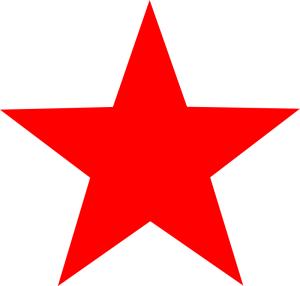Before we get down to work, about work, I need to vent. I hate the word “lifehack.” It’s too jargon-y, and most applications of it are so far removed from the original definition of “hacker,” it just makes me mad. (Are you gaining unauthorized, back end access to the computer system that is your life in order to cause mischief? Is getting up thirty minutes earlier and writing down the things you’re grateful for the direct equivalent of phone phreaking? I’ll stop…)
Definitions aside, lifehack.org can be a source of interesting info amongst all the content. And a significant amount of its contributors seem concerned with the problem of happiness — especially when at work.
Unfortunately, many of us have jobs that do not spontaneously bring us joy. But, thanks to the University of Warwick, we now know the quantified connection between happiness and productivity. And writer Adam Maidment, citing a 2008 report by the American Psychological Association, links being yourself with being happy. Therefore, being comfortable enough to be authentically you at work should equal greater productivity! 
But, how do you be you at work? Maidment presents several strategies, in three categories. My personal favourite is “Don’t aim to please:”
“It’s okay for people to disagree with your opinion from time to time – it’s your opinion, not theirs. Having an opinion means you have a voice. Even if people decide not to listen, you will ultimately feel proud that you at least spoke your mind and shared your feelings. Don’t be brash about it. Be sure to respect other people’s opinions and even company culture, but don’t be afraid to share your thoughts.”
Many of us aren’t lucky enough to work in places where we even have space to voice our feelings. But the sentiment is a solid one to keep in mind, wherever we happen to be… Even if exercising it requires a little creative — (fine) — “hacking.”
I thought it was my devices getting rickety — crankily refusing to load pages, making online video and audio stutter. But no: websites everywhere are getting unwieldy, stuffed full of megabytes worth of info that enhances form but drags down function.
Maciej Cegłowski has distilled an impassioned talk he gave at the Web Directions conference in Sydney, Australia, into a simple, streamlined webpage. In its form, it sets a great example for the future of the web; in its content, its a diatribe against the current plague of “page bloat.”
Page bloat is demonstrated to reduce user engagement with the web. It can be caused by the actual things you’re there to access (presentation slides from a distant conference that are only available as a giant PDF), the structure of the page itself (hidden menus that slide in from nowhere), or the accoutrements of web use today (a huge autoplaying ad for a luxury car). Corporations like Facebook and Google have recognized the problem, and have rolled out “fixes” like Instant Articles or AMP; but, Cegłowski maintains, these only appear to solve the problem:
“[…T]he page describing AMP is technically infinite in size. If you open it in Chrome, it will keep downloading the same 3.4 megabyte carousel video forever.
If you open it in Safari, where the carousel is broken, the page still manages to fill 4 megabytes.
These comically huge homepages for projects designed to make the web faster are the equivalent of watching a fitness video where the presenter is just standing there, eating pizza and cookies.
The world’s greatest tech companies can’t even make these tiny text sites, describing their flagship projects to reduce page bloat, lightweight and fast on mobile.
I can’t think of a more complete admission of defeat.”
Ultimately, this page bloat problem says something disturbing about the current and future web: that its democracy is just an illusion; that it will take the fastest and most up-to-date device and an expensively solid connection to access any information; and, most damagingly, that only professionals with programming and design certifications can, andshould, put anything up on the web.
I support Cegłowski in asserting that this cannot be allowed to happen! The internet can be an immense force for change, and it’s up to us to resist the corporatized slow-down that is becoming the accepted standard. Re-harnessing the web’s true purpose shouldn’t take too much bandwidth at all.
The other day I wrote about experiments in productivity where working for a longer time doesn’t necessarily mean accomplishing more in a relative sense. So if you don’t spend all your time working, what else is there to do…?
Here’s a thought experiment of our own: Subtract 20 from your regular 40-hour workweek. That’s still 20 whole hours to accomplish anything you need to keep the balance in your life. In a perfect world, in which you get everything done work-wise in merely 20 hours, how would you spend the rest — in the following ways, proven to increase happiness?
– volunteering or donating to charity
– spending time with family and friends
– Exercising or just getting some fresh air
– Learning something new or retrain your brain to see the happiness around you
– Brewing and enjoying a cup of tea!
Or maybe there’s been something that you’ve been wanting to do for a long time but just have been able to find the time…..I’d love to hear more ideas from you!
Chris Bailey writes for The National Post about an experiment he undertook early on in his Life of Productivity efforts, when he needed to get a really good sense of the amount of  hours of work it took to actually accomplish something. He set up alternating weeks of very short and very long (20 hour and 90 hour respectively) working weeks, and tracked how much work he completed, as well as how much work he felt he completed.
hours of work it took to actually accomplish something. He set up alternating weeks of very short and very long (20 hour and 90 hour respectively) working weeks, and tracked how much work he completed, as well as how much work he felt he completed.
Bailey expected to find, like most of us I imagine, that if he threw more hours at a project, he would get a lot more done. But, when he finished his experiment and compared his long weeks to his short weeks, he discovered the following:
Bailey attributes his ability to get roughly the same amount of work done in 20 hours as in 90 hours to the focused “energy and attention” he was able to bring to it. In the longer workweek, that energy and attention was dispersed more widely:
“When I invested more time in my work during my insane weeks, my work became a lot less urgent; on a minute-by-minute basis, I invested less energy and focus into everything I intended to get done. But when I had a limited amount of time in my 20-hour weeks, I forced myself to expend significantly more energy and focus over that shorter period of time so I could get everything done I had to do. Of course, all the pressure I felt during this experiment came from me — I didn’t have a boss, team or any large, looming deadlines around the corner. But the lesson is just as potent: by controlling how much time you spend on a task, you control how much energy and attention you spend on it.”
This is the chief lesson Bailey derived from his experiment, and one he wants to pass along to us: We can’t always control the length of time we have to complete a project, but we can control the shortness of time — and a shorter time in which to work equals greater productivity.
Bailey recognizes that the world can’t run on the 20-hour workweek ideal — but he cites research that the standard workweek of 35 to 40 is still sustainable, as studies show productivity and quality really takes a nosedive after 40 hours. There is some hope for us!

Two programmers at the 32nd Chaos Communications Conference have offered the rest of the world a look at the operating system that runs the Democratic People’s Republic of Korea — otherwise known as the mysterious and suspicious North Korea.
North Korea has been closed to outside influences since the mid-20th century reign of Kim Il-Sung, and its continued existence depends heavily on propagandistic claims that, despite frequent famines and a violently repressive government, the country is better off than anywhere else. In order to keep this up, an operating system has had to be created that serves the regimes restrictive purposes, while acting spiffy enough to be appear competitive.
Dubbed Red Star OS, the system is Linux-based and superficially looks an awful lot like Mac OS 10 (the rumoured favourite of current leader Kim Jong-Un). Florian Grunow and Nicklaus Schiess take the 32C3 audience through an hour-long, totally fascinating analysis of the OS here. (There’s a shorter real-time that I found intriguing here, via BoingBoing.) Some of my favourite points include:
In short, Red Star OS is a spectacular demonstration of the lengths a regime will go to in order to limit and ultimately persecute its citizens, while maintaining the shiny propaganda façade of competitive computing. It makes me grateful that all my computer does to injure me is occasionally not recognize my printer…